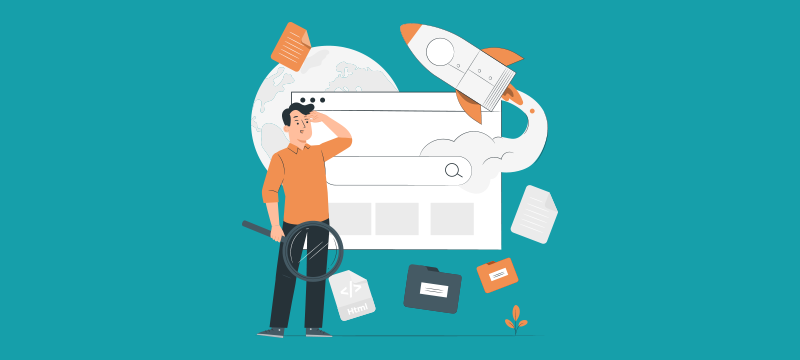The performance of your website can be determined by the amount of bounce rate you encounter. Higher the bounce rate, lower the level of performance. In order to determine your bounce rate, you need to first understand what a bounce means. A bounce refers to a web session that witnesses a user leaving your website after visiting a single page. A bounce rate refers to the session percentage that see a visitor choose to move on after viewing only one page on your website.
What happens when you have a high bounce rate?
When your website fails to garner people’s attention enough for them to browse, it is referred to as a high bounce rate. When they visit your website, they leave without examining any of the other pages. A high bounce rate is acceptable only when there is only one page on your website. If there are several pages on your website, visitors leaving without browsing resulting in a high bounce rate is cause for concern.
You would want people to visit and engage in more than a single article when they pay a visit to your blog. If you have a business website, you would want visitors to take a look at all of your services and products, not just leave from your homepage. Basically, a high bounce rate refers to your visitors failing to check out various pages on your website which can contribute to low performance.
Here are some measures you can take to lower your bounce rate.
- Ensure your website is user friendly User experience refers to the emotions a user feels while dealing with your website. If the feelings lean towards positive, it is considered as a good user experience. A user finding your website easy to navigate and the experience pleasing contributes to it being a positive experience. The main thing you need to accomplish is building a website that is aesthetically pleasing when viewed on all devices and platforms. It gives you a chance to observe the reactions of your customers to your website. Make the website as simple as possible, so that your customers are not lost in it.
- Increase your upload speed The loading speed of your website is one of the most important factors that cause a high bounce rate. If someone is browsing on their mobile and your upload speed is up to 10 seconds, there is a 123% chance that your visitors will leave your website. When you think about your own life you will realize that you will never wait for a long time for a website to load either. A majority of people will choose to leave that website and go to your competitor’s website to find what they need. There are many reasons that are causing a slow website such as the size of your images, website server, and multimedia content that loads on its own. You should aim to center your page loading time at a maximum of two seconds, if not less than that. It is the average amount of time you have your audience’s attention before they move on to a different website.
- Update website content If your website has a lot of old content that exceeds 3 to 5 years, it is time to update your content in order to better it. Your web content could get old quite fast and become irrelevant based on the kind of website you’re running. So if the user is looking for some content, happens upon your website, and is faced with irrelevant or outdated content, they will leave your website immediately to never return. You can make your website content better by figuring out new ways to add in description or get your content and information up to date. Adding a relevant case study or improving user readability by simplifying your content to describe new observations.
- Optimize for Relevance Apart from technical measures such as focusing on minimizing page loading times or following formatting practices, one of the main things you need to focus on is ensuring the relevance of your website. There are certain websites that have mastered the art of targeting specific keywords efficiently so that only content shows up instead of forcing users to sift through irrelevant content to find what they are looking for. Irrelevant content will spike your bounce rate. Hence, relevance optimization is incredibly important.
Conclusion
Bounce rates can cause great damage to your website. It is a clear indication that your performance is suffering. By putting the above measures into practice, you will see a decrease in bounce rates and a significant boost in the performance of your website. Just keep in mind that bounce rate is a huge factor that influences your rank on various search engines like google. So work on it, and watch your website soar. If you need further help in reducing bounce rates, you can reach out to your web hosting provider for further assistance.
